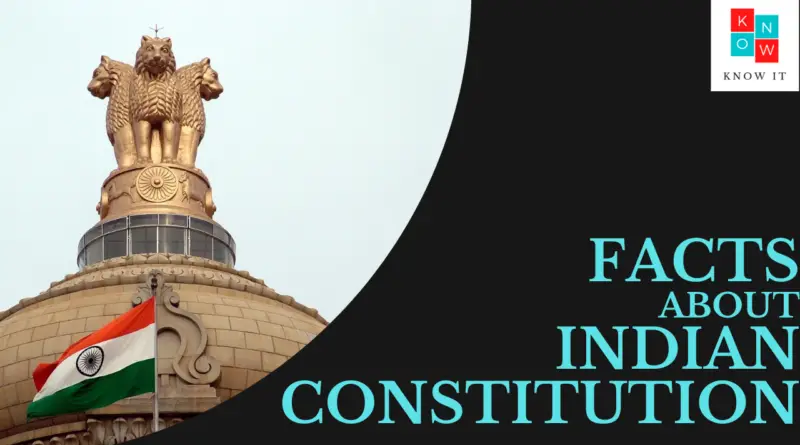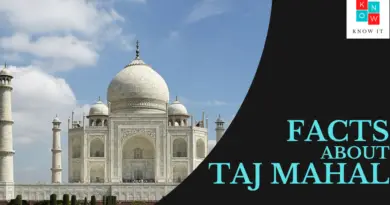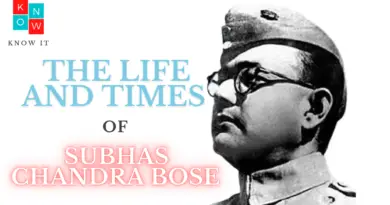Interesting Facts about the Indian Constitution
There are a lot of interesting facts about the Indian Constitution. It is one of the world’s longest constitutions and one of the most important documents in India. The constitution was written by members of the Constituent Assembly. The constitution took effect on January 26, 1950.
The Indian Constitution is the supreme law of India. It lays down the framework defining fundamental political principles, governing the administration of both Union and state subjects. The Constitution is divided into four parts: Fundamental Rights, Directive Principles of State Policy, Union List and Concurrent List.
Indian Constitution History and What it Means to be an Indian Citizen
The Indian Constitution is the supreme law of India. It is the longest written constitution of any sovereign country in the world. The Constitution came into force on 26 January 1950 and has been amended from time to time.
The Constitution provides for a parliamentary system of government, with certain unitary features, and has been described as “a unique experiment in democracy”. As a founding document of modern India, it also provides for a secular state with democratic values. The Indian constitution is made up of many different parts that are called articles that are numbered sequentially from Part I to Part XXI.
What are Articles in the Indian Constitution?
An article is a provision of the Constitution of India that establishes the law for a particular area.
The articles in the Indian Constitution are divided into three parts: Part I, Part II, and Part III.
- Part I contains articles 1 to 4 which provide for legislative procedures and fundamental rights.
- Part II contains articles 5 to 11 which create the executive branch of government, including the office of president and vice-president.
- Part III contains articles 12 to 245 which establish the federal structure of government by providing for legislative powers, judicial powers, and administrative powers.
Interesting Facts about the Indian Constitution

1. The Constitution was originally written in both Hindi and English.
The copies of India’s constitution were drafted in 2 languages, Hindi & English. Both copies were signed by the members of the constituent assembly.
The Constituent Assembly of India is a body comprising representatives of the States and Indian princely states of British India. The Constituent Assembly became the Provisional Parliament on August 15, 1947, and then became the First Parliament on January 26, 1950 after the adoption of the new constitution.
2.The Indian Constitution was modeled after other Constitutions, looking to provide long-lasting democratic principles.
The Indian Constitution has borrowed many provisions from other constitutions of countries like the US, USSR, UK, France and more.
The Indian Constitution is the longest and one of the most intricate constitutions of any nation, owing to its colonial past. It has borrowed provisions from many other constitutions, with the most significant borrowing coming from the United States Constitution.
3.The English Version Has 117,369 Words
The Constitution of India is the longest written document in the world. Enacted on November 26, 1949, it has 444 articles in 22 parts, 12 schedules, 115 amendments and the total number of words is 117,369. It would take you 15 hours to go through the entire constitution.
4.Dr. Ambedkar, the father of the Indian constitution, had reservations about it and said he would rather burn it than see casteism continue.
While debating with others about how a Governor should be given more power, Dr. Ambedkar strongly argued in favour of amending the constitution and said “I am quite prepared to say that I shall be the first person to burn it out. I do not want it”.
5.Every page in this book is beautifully decorated by artists from Shantiniketan.
The original handwritten constitution was decorated by artists from Shantiniketan, which was expanded by Rabindranath Tagore. Rabindranath Tagore, the Nobel Laureate from Shantiniketan, expanded the original document by adding articles on fundamental rights and duties of citizens.
6.It Was Handwritten by Prem Behari Narain Raizada
The Indian constitution is regarded as one of the finest calligraphic examples of the 20th century. It was famously penned by Prem Behari Narain Raizada, an Indian calligrapher who took eight months to complete the task. The result is a work of art that became widely celebrated for its flowing italic handwriting-style.
7.The Government of India Act, 1935 is the basic structure of the Constitution.
The Government of India Act, 1935 is the law that directs the formation of our Constitution. It was passed in 1935 and is an important part of our country’s history.
The Government of India Act, 1935 is an important part of our country’s history. It provides for a federal form of government and under Article 2 lays down the qualifications for voting and eligibility to be elected to the House of Commons.
8.There have been a lot of changes in the draft since it was originally created. In total, 2,000 amendments were made to it during this process.
India’s constitution is the longest written constitution in the world. It underwent 2,200 amendments before it was finalised.
9.The original copies are stored in special cases.
The originals of the Indian Constitution, which were written in Hindi and English, are kept in special helium-filled housings at the Library of the Parliament of India.
10. 9th December 1946 marks the first meeting of the Constituent Assembly which fulfilled India's desire for political independence.
The Constituent Assembly was India’s very first Parliament and Dr Sachchidananda Sinha was its first temporary president. The assembly was established on 9th December 1946. The Constituent Assembly is most notable because it would later draft the Constitution of India. It also laid the foundation for democracy in India.
11.On January 26th, 1950, The Constitution of India was enforced after the Constituent Assembly set up the Union of India and wrote a constitution for it.
India passed its Constitution on 26 January 1950. This happened after The Government of India Act was enacted by the British Indian Empire in 1935.
12.India adopted the national flag on 26 January 1950.
Our National emblem – The Lion Capital of Ashoka – was adopted on 26 January 1950. It consists of four Asiatic Lions standing back-to-back and symbolizes power, courage, pride and confidence.
13.Amended 104 times since 1950
The Indian Constitution is a set of laws that governs the country. It has been amended 104 times since it was first enacted in 1950.
Conclusion- The Importance of Knowing About India's Constitution
The Indian Constitution is a set of principles that the country’s government and its citizens are bound to. It was drafted in 1949 and has been amended many times since then. The Constitution of India is the longest written constitution in the world.
In conclusion, it is important to know about India’s Constitution because it binds the country’s government and its citizens together.




I appreciate the time and effort you’ve put into compiling this content. Thanks for sharing it with us.
Fantastic article! The information you provide is important. Thank you for sharing!